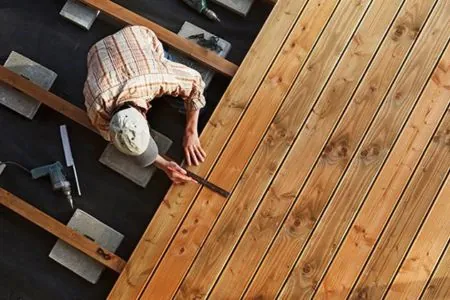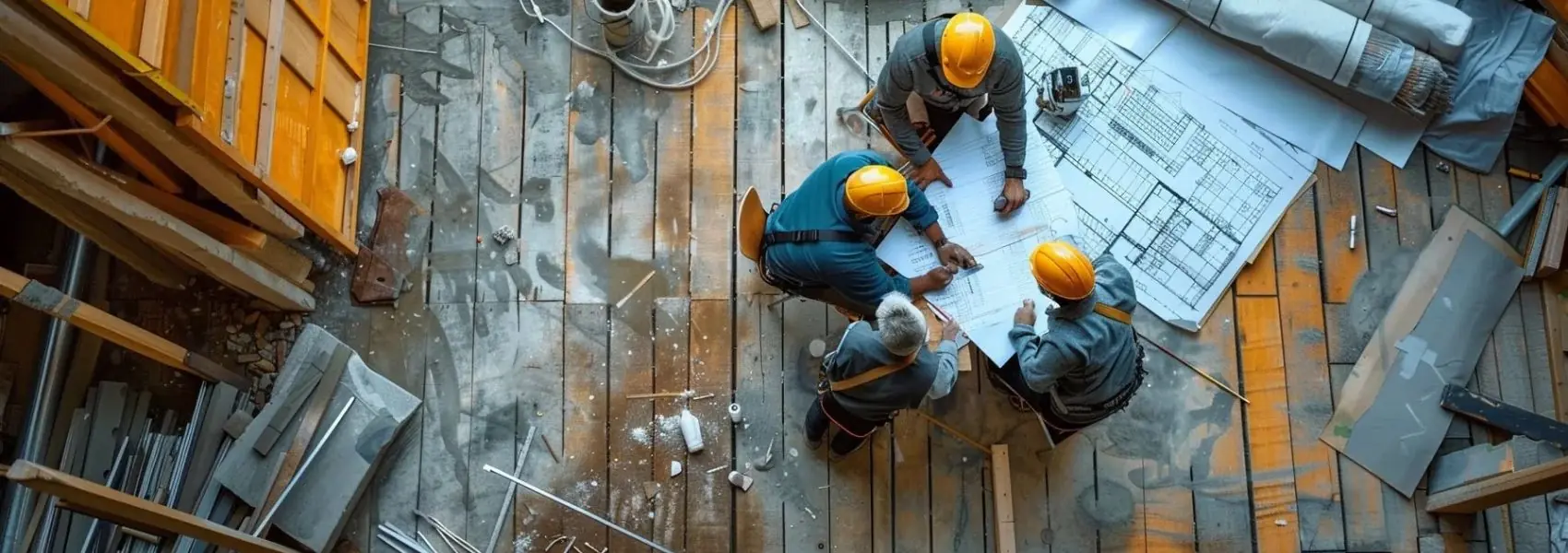
To have your dream deck standing in perfect shape is a truly relaxing and fulfilling feeling. In fact, decks are one of a homeowner’s top investments. Proper deck maintenance and staining are the secret to maintaining that luxuriously stunning look of your deck.
Decks are exposed to a mixture of elements outdoors, such as the rain, the sun, the snow, and the constantly changing climate. Thus, these things cause the deck to weaken depending on the type of material and its age. Every deck deserves some TLC, so why not have a professional deck builder check your deck and fix whatever needs to be fixed.
When to Stain a New Deck
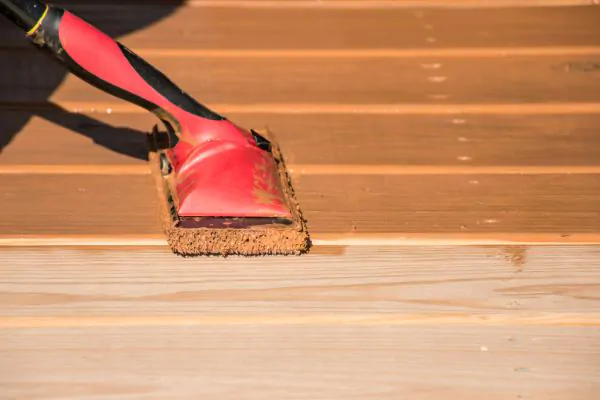
You may wonder how often you should stain your deck. Staining your deck is not only vital for the aesthetics of your outdoor extension but also for the safety of your family. A new deck may be more complicated to maintain and stain than an older deck.
New decks need to dry out first before applying any finish or paint. Yet, new wooden decks require a regular coat of paint or stain. New decks need to dry out for at least 30 days before applying any paint or stain. You may choose to apply finish right after it is constructed. But, be aware that it would mean doing it more than once.
How Often Should I Paint My Deck?
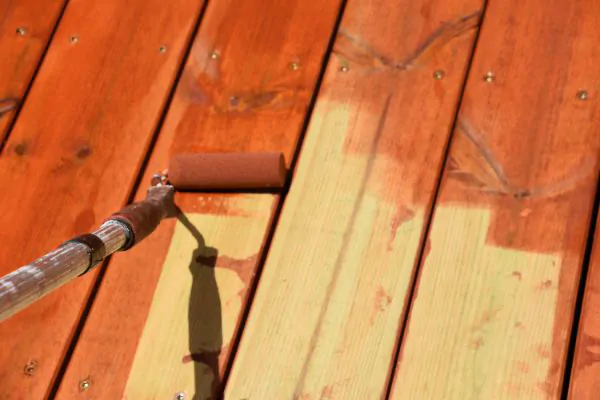
As part of the maintenance process for decks, staining and painting them should be done when you see any sign of peeling, bubbling, or flaking. Should you use paint or stain? Experts in deck building do not suggest the use of paint, especially on wood. Paint has the tendency to cause wood to expand or shrink, depending on how much it is exposed to the elements. That is also why paint bubbles over time.
Another reason that paint isn’t really meant to be applied for decks is that it creates wear and tear after the deck has been exposed 24/7 to the weather outside. The yearly maintenance that you perform on your wood deck that’s already been painted should include slightly sanding the surface and painting the parts where there is peeling.
How to Stain Older Decks
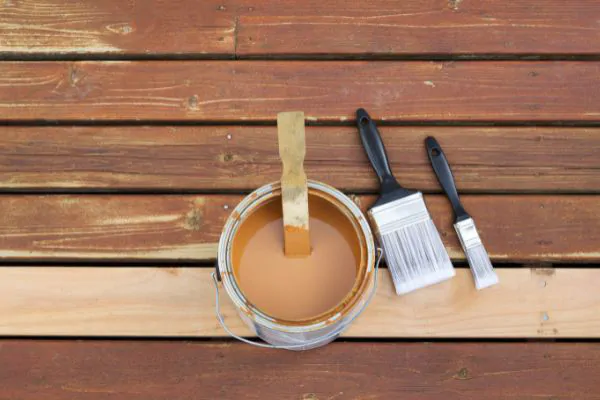
Your decks should receiveproper maintenance and staining every two to three years if you desire to preserve its beauty and durability. For that, watch out for some of the signs that tell your deck needs staining, which include:
– There is mildew and mold buildup.
– Stain color has worn off.
– Water gets into the deck boards.
Staining your wood deck should be uniform to all of its parts. When you stain one part, make sure to stain all the other parts with the same material and frequency as well. If you see that there is an area in your deck that wears or fades faster in some parts, you’ll have to reseal the entire deck.
Likewise, when choosing the paint to use for your deck, choose the oil-based type because it penetrates wood well enough and because it serves as your wood deck’s protection against any waters trying to get inside. Stain the horizontal surfaces first before anything else because that is the part that is often exposed to the elements.
Related Post: Deck Cover For Winter: Steps For Protection And Longevity
Deck Maintenance and Staining Experts in Ontario, CA
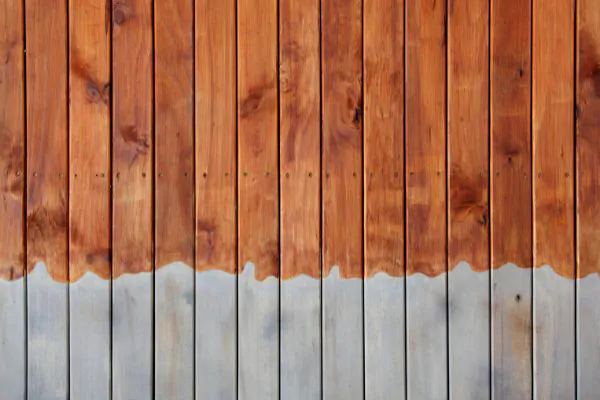
Simple as it may seem to you, deck maintenance is a task done better by experts. Otherwise, staining applied without proper skills and training can cause your deck to be ruined and unsafe to use. If you are thinking about hiring professionals in deck maintenance and staining, keep one name in mind: Zappa Deck Builders. We have been serving the town and surrounding area for over a decade.
Our expert deck restoration team has come across different types of decks that need maintenance, repairs, and resealing services to which we have provided the perfect solution. We consider the type of material used for your deck in choosing the right type of paint to apply. Our team of highly skilled deck builders will be there, too, to perform repairs in the parts where it is needed. Whether it’s a residential or a commercial deck building service you require, we’ll be here to assist.
Staining and resealing are just some of the services we do best. You can come to us or call us at 909-787-2759 when you require deck design and installation, deck repair and restoration, porch design and installation, among others. We’ve got the most capable deck builders and painters on our team who can help you anytime.
Frequently Ask Questions
How much does it cost to reseal a deck?
The cost to reseal a deck typically ranges from $0.50 to $3.00 per square foot, depending on factors like the size of the deck, the condition of the wood, and the type of sealer used. For a smaller deck, expect to pay between $200 and $500, while larger decks could cost anywhere from $500 to $1,500 or more. If you hire professionals, additional labor costs can range from $200 to $500 or more, depending on the complexity of the job. DIY projects can lower the cost, but hiring experts ensures a longer-lasting and more thorough application. Investing in resealing can extend the life of your deck, preventing costly repairs in the future.
How long does water seal last on a deck?
The longevity of a water seal on a deck generally lasts between 1 to 3 years, though several factors influence this duration, including the quality of the product, weather exposure, and foot traffic. Premium sealants can last up to 5 years when applied correctly to a well-prepped surface and with proper deck maintenance. Regularly cleaning the deck and inspecting it for wear can help the sealant perform better and last longer. Reapplying the water seal as needed is crucial to keeping your deck protected from moisture, UV rays, and other environmental factors.
Is it worth sealing a deck?
Sealing a deck is highly beneficial as it protects the wood from moisture, sun damage, and mold, significantly extending its lifespan. A sealed deck not only maintains its natural beauty but also becomes easier to clean, making upkeep less labor-intensive. By sealing your deck, you avoid expensive repairs or replacements caused by rot or warping over time. Additionally, the enhanced look of a well-sealed deck adds curb appeal and value to your home. Overall, the investment in sealing is well worth it for long-term savings and protection.
Is it better to spray or roll deck sealer?
Spraying deck sealer is faster and provides a uniform, even coat over large areas, making it ideal for bigger decks or when time is a factor. However, rolling offers more precision, especially around edges, corners, and tight spaces. Rolling also ensures the sealant penetrates deeper into the wood fibers, providing a longer-lasting finish. For best results, many professionals use a combination of both methods—spraying to cover the main surface area quickly and then using a roller to refine and even out the application. The choice depends on the deck’s size and your need for speed or accuracy.
Can you reseal an old deck?
Yes, you can reseal an old deck to restore its appearance and protection against the elements. The process involves cleaning the deck thoroughly to remove dirt, old sealant, or mildew, repairing any damaged wood, and then applying a fresh coat of sealant. Proper preparation, such as using a deck cleaner and pressure washing, ensures the new sealant adheres well and offers maximum protection. By resealing an old deck, you can enhance its appearance and prolong its lifespan, saving on costly repairs or replacement down the road.
Can you permanently seal a deck?
A deck cannot be permanently sealed because all sealants wear down over time due to exposure to weather conditions and foot traffic. However, using high-quality sealants and maintaining the deck by cleaning and reapplying sealant as needed can significantly extend its protection. Most sealants require reapplication every few years to keep the deck protected from moisture, UV rays, and other damaging elements. While permanent sealing isn’t possible, regular maintenance can keep your deck in great condition for many years.
What happens if you don’t seal your deck?
If you don’t seal your deck, it becomes vulnerable to several issues over time. Unsealed wood is exposed to moisture, leading to warping, cracking, and rot as water penetrates and weakens the structure. UV rays from the sun can also cause the wood to fade, dry out, and become brittle. Additionally, unsealed wood is more prone to mold and mildew growth, which can create a slippery and unsafe surface. Regular sealing is crucial to prolong the life of your deck and maintain its safety and aesthetics.

